All figures are as of January 2025, unless otherwise noted.
Visitors to the Museum
Since opening in April 1993
Total: More than 49 million
Demographics: Currently 24% school children; 12% international; approximately 90% non-Jewish
Dignitaries: More than 120 heads of state; more than 3,500 foreign officials from over 132 countries
Members: 204,637
Visitors Online
Museum Websites: In 2024, 33.9 million visitors representing 243 countries and territories (57.5% international visitors)
Holocaust Encyclopedia: Available in 20 languages; in 2024, visited by 26.5 million people worldwide
Facebook: 1,717,530 followers
X (formerly known as Twitter): 405,293 followers
Instagram: 234,271 followers
YouTube: 168,888 subscribers
LinkedIn: 16,700 followers
William Levine Family Institute for Holocaust Education
The Levine Institute is the world’s preeminent institution for promoting quality Holocaust education. As part of our nation’s official memorial to the Holocaust, the Levine Institute’s educational programs reach students, teachers, and the public as well as leaders in the American military, judiciary, law enforcement, and government.
The Teacher Fellowship Program trains leaders in the field of Holocaust education. This national corps of skilled educators promotes quality Holocaust education and programs to ensure that how and why the Holocaust happened is an important component of Holocaust education.
More than 268 fellows, representing 49 states, the District of Columbia, and 11 countries, trained since the program began in 1996.
Leadership programs for professionals examine the choices made by individuals and institutions during the Holocaust to give participants insight into their own professional and individual responsibilities today.
More than 272,940 professionals educated through our programming.
Military:
Approximately 69,800 military professionals, including officers-in-training, active duty US military, and international officers.
Government:
Approximately 6,740 government professionals at various levels in their careers across agencies.
Judiciary:
Approximately 27,500 federal and state professionals, including judges, prosecutors, attorneys, and court support staff.
Conducted 215 Law, Justice, and the Holocaust programs in 45 states, Canada, and Puerto Rico.
Law Enforcement:
Approximately 168,470 federal, state and local law enforcement, including FBI, Secret Service, MPDC, Philadelphia, Montgomery, Prince George’s, NYPD, etc.
Conduct 80-100 programs annually, in seven cities across the US.
Global Security Professionals:
Approximately 330 global security professionals, including mid-career professionals at the George C. Marshall European Center for Security Studies, international human rights lawyers, and refugee and asylum officials
Special Exhibitions in the Museum
Americans and the Holocaust - Temporarily closed through 2.28
Remember the Children: Daniel's Story
American Witnesses
One Thousand and Seventy-eight Blue Skies
Traveling Exhibitions
More than 350 presentations of nine exhibitions in 210 cities and 49 states, as well as Canada, Croatia, France, Germany, Hungary, Israel, Serbia, Tunisia, Belgium, South Africa, Namibia, and Poland. The United Nations has hosted three Museum exhibitions, two at UN headquarters in New York City and one in Paris.
Jack, Joseph and Morton Mandel Center for Advanced Holocaust Studies
The Mandel Center promotes the growth of Holocaust studies at American universities, fosters relationships between American and international scholars, and works to ensure the ongoing training of future generations of Holocaust scholars.
More than 1,079 faculty seminar participants from 49 states and the District of Columbia (and Bahamas, Brazil, Canada, Chile, China, Germany, India, Israel, Italy, Mexico, Netherlands, Puerto Rico, South Korea, Sweden, the UAE, and the UK) in 54 Mandel seminars held at the Museum from 1999 to 2024.
More than 712 fellows-in-residence from 44 countries since 1994.
More than 1,049 campus outreach lectures in 49 states since 2001.
David M. Rubenstein National Institute for Holocaust Documentation
The Museum is building the authoritative collection of record on the Holocaust and making it fully accessible and preserved for future education, research, and scholarship. The Museum’s collection of artifacts, documents, films, photographs, recorded sound, microfilms, digital resources, and published materials is preserved in the state-of-the-art David and Fela Shapell Family Collections, Conservation and Research Center.
27,067 objects
Approximately 130 million pages of archival documents, with an additional 200 million digital images from the Arolsen Archives (formerly the International Tracing Service).
More than 114,111 historical photographs and images, of which 91,832 are digitized.
More than 1,456 hours of archival film footage; 220 hours of outtakes from the film SHOAH.
More than 136,000 library items in 63 languages.
More than 28,000 Holocaust-related testimonies and access to nearly 59,000 oral histories from the University of Southern California Shoah Foundation and 4,500 interviews from Yale’s Fortunoff Video Archive for Holocaust Testimonies.
211,000 survivors and their descendants, as well as other victims and World War II veterans, registered in the Meed Survivors Registry.
Approximately 12.9 million name records in the Holocaust Survivors and Victims Database, of which over 10 million records are available online.
Simon-Skjodt Center for the Prevention of Genocide
The Simon-Skjodt Center is dedicated to stimulating timely global action to prevent genocide and to catalyze an international response when it occurs. Its goal is to make genocide prevention a core foreign policy priority for leaders worldwide through research, education, and public outreach.
Led more than 10 Bearing Witness trips from 2004–2024 to countries of concern including Burma, Iraq, South Sudan, Rwanda, The Democratic Republic of the Congo, and the Syrian border to sound the alarm about the need for urgent action in places at risk for genocide and related crimes against humanity.
Met with hundreds of policymakers in the United States and abroad to strengthen governments’ will to prevent genocide and related crimes against humanity.
Hosted 35 fellows over the past ten years who have conducted cutting-edge research that can save lives - including developing the world’s first public early warning system for assessing the risk of mass atrocities in countries around the world.
This Section
Resources and tips to assist you before, during, and after your visit to the Museum
